Novation X-Station 49 Handleiding
Novation
Niet gecategoriseerd
X-Station 49
Bekijk gratis de handleiding van Novation X-Station 49 (65 pagina’s), behorend tot de categorie Niet gecategoriseerd. Deze gids werd als nuttig beoordeeld door 106 mensen en kreeg gemiddeld 4.7 sterren uit 53.5 reviews. Heb je een vraag over Novation X-Station 49 of wil je andere gebruikers van dit product iets vragen? Stel een vraag
Pagina 1/65

Introduction........................................................... 2
In the Package.................................................................2
Product Registration.........................................................2
Using This Manual........................................................ 2
MIDI Controller Section Main Features......................... 2
Audio Section Main Features........................................ 2
Synthesizer Features.......................................................2
Quick Start Guide.................................................. 3
Conventions used in this Manual.................................... 3
Connecting Up To equipment......................................... 3
Stand Alone Operation.................................................... 3
Playing the Synthesizer........................ ....................... 3.....
Windows XP USB Driver Installation............................. 4
MAC OS X USB Driver Installation................................. 4
About ASIO on Windows XP........................................... 4
About Core Audio on MAC OS X..................................... 4
Selecting The X-Station as the Audio Device................. 5
Selecting The X-Station as the Audio Device in Cubase. ........ 5
The X-Station Control Panel........................................... 5
About Latency.................................................................. 5
Selecting The X-Station as the MIDI Device in Cubase.......... 6
Selecting The X-Station as the Audio Device in LOGIC.. ........ 6
Selecting The X-Station as the Audio Device in Reason.. ........ 7
Selecting The X-Station as the MIDI Device in Reason.. ........ 7
Controlling a VST Plug-In or Reason Instrument........................ 7
Factory Supplied Templates........................................... 7
Using The Programmable Template Controls................ 8
Sending A Snapshot Of The Controls............................10
Selecting A Sound On External MIDI Devices.............. 10
Changing The Action Of The Pitch / Mod Joystick.........10
Audio Connection And Setup.........................................10
Setting Up The Microphone Or Instrument Inputs.........10
Monitoring......................................................................10
Recording And Listening................................................10
Recording And Listening With Effects............................11
MIDI Tutorial......................................................... 12
Introduction................................................................... 12
How MIDI Ports Are Used............................................ 12
MIDI Messages............................................................. 12
Detailed Operation.............................................. 15
Front Panel Layout....................................................... 15
Modes And Menus....................................................... 16
Using Menus................................................................ 16
Entering Text................................................................ 16
The Template Common Menu...................................... 17
Template Edit Mode (Editing A Template).................... 18
The Template Edit ‘CC’ Pages..................................... 18
The Template Edit ‘NRPN’ & ‘RPN’ Pages.................. 19
The Template Edit ‘MMC’ Pages.................................. 19
The Template Edit ‘Note On/Off’ Pages....................... 20
The Template Edit ‘SYSEX MESSAGE’ Pages............ 20
The Template Edit ‘Program Change’ Pages............... 21
Using The X / Y Touchpad........................................... 21
Using The Footswitch Or Pedal................................... 22
Saving A Template To Memory..................................... 22
The Dual Multi Effects Processor................................. 23
The Delay Effect........................................................... 23
The Reverb Effect......................................................... 24
The Chorus Effect......................................................... 24
The Compressor........................................................... 25
The Distortion Effect..................................................... 26
The EQ Processor........................................................ 26
Advanced Features............................................. 27
Using The Transport Buttons....................................... 27
The Global Mode Menu.............................................. 27
Saving The Global Settings To Memory....................... 29
Upgrading The Operating System From MIDI............. 29
Synthesis Tutorial............................................... 30
Elements Of A Sound.................................................. 30
The Oscillators And Mixer............................................ 31
The Filter....................................................................... 32
Envelopes And Amplifier.............................................. 33
LFOs............................................................................. 35
Memories...................................................................... 35
Summary...................................................................... 35
The KS Synthesizer............................................. 36
Introduction................................................................... 36
Selecting KS Synth Patches........................................ 36
Editing A Synth Patch (Sound)..................................... 37
Saving A Synth Patch................................................... 37
Using Menus................................................................ 38
The Oscillator / Mixer Section..................................... 38
The Filter Section......................................................... 40
The LFOs Section........................................................ 41
The Envelopes Section................................................ 42
The Arpeggiator Section............................................... 43
The Effects Section...................................................... 44
The Oscillator Menu..................................................... 44
The Mixer Menu........................................................... 45
The Filter Menu............................................................ 47
The LFO Menu............................................................. 47
The Arpeggiator Menu.................................................. 49
The Sync Menu............................................................ 50
The Wheels Menu........................................................ 51
The Aftertouch And Breath Menu................................. 52
The Pan Menu.............................................................. 53
The KS Synth Mode Global Menu................................ 54
Routing MIDI To And From The KS Synthesizer.......... 54
The KS Synth General Settings................................... 55
Saving The KS Synth General Settings....................... 55
Appendix.............................................................. 56
Troubleshooting............................................................ 56
Using The X-Station With Reason............................... 57
Known Anomalies With Reason.................................. 57
Preset Template Listings...........................................58-61
The KS Synth Patch Preset Listings............................ 62
MIDI Implementation Chart........................................... 64
Safety CE Notices And Approvals................................ 65
CONTENTS
Contents
• •1

Thank you for purchasing the X-Station controller keyboard and synthe-
sizer. The X-Station is a state of the art product, it turns any com-
puter into a complete, professional music & audio production
workstation with hardware synthesizer, audio & MIDI interface,
control surface and effects processor – all in one package with
USB, PSU or battery power!
When used with a computer running a MIDI / Audio sequencer package
it will provide a superb, compact recording setup.
It may be used to control sequencers, popular software virtual instru-
ments on a computer or traditional hardware instruments via either a
USB connection or a standard MIDI interface. In addition to the control
features it contains two audio pre-amplifiers together with a twin multi-
effects processor that allows the recording and replay of mono or
stereo audio signals to and from a computer.
The front panel provides a wealth of programmable controls arranged in
the format of a traditional synthesizer, each of which can be configured
to suit the needs of the instrument to be controlled. Each control can be
stored within a Template memory for instant recall at a later time.
The X-Station is equally at home in a live performance or studio situa-
tion where it can be used as a stand-alone synthesizer, MIDI controller
keyboard and recording device. Its comprehensive range of controls
may be used to dynamically alter any sound parameters precisely and
in real time whilst simultaneously recording and replaying stereo audio
data.
In the package
The X-Station package contains the following list of items.
•Main Keyboard X-Station Unit
•Power Supply
•User Manual
•USB Cable
•Set of Template Overlays
•X-Station Driver and Resources CD-ROM
When opening the package, please make sure all of the items above
are present, if not then please contact your local dealer.
www.novationmusic.com - Product Registration
Please take the time to register your new Novation X-Station. Point
your browser to www.novationmusic.com and complete the registra-
tion form. We advise that you visit www.novationmusic.com from time
to time to check for feature upgrades along with the appropriate docu-
mentation.
Using This Manual
This manual consists of seven sections; Introduction, Quick Start
Guide MIDI Tutorial, , Detailed Operation, Advanced Features,
Synthesis Tutorial The KS Synthesizerand . For easy reference, the
section name is printed at the top of each page. An is alsoAppendix
provided containing reference data.
It is assumed that the reader already has a basic knowledge of MIDI in
order to configure user Templates. Those with limited MIDI experience
may find the MIDI Tutorial useful. Although very little MIDI knowledge is
required to use the the X-Station with the factory programmed
Templates.
It is recommended that this manual is read in sequence chapter by
chapter.
The main features of both its MIDI controller capability and Audio oper-
ation are listed below.
MIDI Controller Section Main Features
X-Station features a superb two, four or five octave semi-weighted
velocity-sensitive keyboard with combined Pitch bend and Modulation
joystick. The keyboard is transposable up or down across the entire
MIDI note range and can transmit Channel Aftertouch.
A programmable X/Y touch pad surface for simultaneous control of mul-
tiple parameters is provided.
MIDI or USB operation. USB and MIDI may be used simultaneously. A
MIDI OUT port, a MIDI IN Port, a Foot pedal input socket and a
Footswitch input socket are available.
Power can be supplied by the USB port, Batteries or a 9V DC adapter.
A virtual synthesizer control panel layout comprising 28 buttons, 16
pots, 3 encoders and 9 sliders are assignable to each template. There
is no need for template labels for control of most synthesizers
Any front panel control may be configured to transmit on any MIDI
channel, to any destination utilising the comprehensive MIDI specifica-
tion. Available options include Controller numbers, NRPNs, RPNS,
Bank Change, Program Change and definable System Exclusive
Strings. System Exclusive strings may be up to 20 bytes long. Control
data may be inserted anywhere within the System Exclusive message.
40 Template editable memories are available. Each Template contains
definitions for all front panel controls. Templates may be individually
named for easy reference and saved to/from an external sequencer via
MIDI Sysex bulk dumps
Audio Section Main Features
Two Novation high precision, low noise high bandwidth audio pre-ampli-
fiers with phantom power and over 70 dB headroom deliver a warm,
clear signal typical of Novation's commitment to sonic excellence.
Complete multi-effects processors are available per input channel fea-
turing simultaneous Reverb / Chorus-Phaser / Delay / Compressor /
Distortion and EQ.
Integrated USB low latency Audio and MIDI - Requires just a single
USB connection a computer.
High power independent headphone output with separate stereo con-
verter for zero latency monitoring of input signal with or without effects
44.1 / 48 Khz 24 bit simultaneous 2 channel Audio input and output
operation
Driver software included to run on Windows XP or MAC OSX.
Synthesizer Features
The X-Station includes a 3-oscillator virtual analog synthesizer model
based on the renowned Novation KS-series and is 8-voice polyphonic.
The extensive control interface provides instant access to most param-
eters, making sound creation fast and intuitive. The synthesizer is total-
ly integrated with computer recording setups: The stereo audio output is
sent straight through the USB cable onto the track into any ASIO-com-
patible sequencer.
There are 200 excellent factory sound programs which have been care-
fully crafted to cover most styles of music and programs can be easily
imported and exported into a sysex librarian.
INTRODUCTION
Using This Manual - Main Features - Conventions Used
• •2

Conventions Used In This Manual
The word ‘Template’ refers to a collection of knobs, encoders and but-
ton settings and the function of the footswitch, pedal and X-Y touchpad.
Each Template is numbered from 1 to 40 and can be saved in the X-
Station’s non-volatile memory.
The word ‘Template Label’ refers to a coloured or blank ‘overlay’ which
sits neatly in the synthesizer control panel area.
The word ‘Preset’ refers to a Template configured at the factory to
showcase some of the powerful control possibilities. Preset Templates
may be over-written by new settings.
The word ‘Control’ refers to any of the front panel knobs, assignable
buttons, encoders, footswitch, foot pedal, joystick or the X-Y touchpad.
Within a single Template. Each control may be individually configured
to transmit various types of MIDI information addressed on any combi-
nation of the MIDI OUT / USB ports.
The word ‘Setting’ refers to any parameter which is edited from within a
menu.
The word ‘Synth Patch’ refers to a synthesizer memory which is
accessed while the X-Station is operating in the synthesizer mode.
Text in CAPITALS refers to a front panel Control or legend (even
though the name of the Control may actually be in lower case on the
front panel). It could be a knob, button, slider or rotary encoder.
Connecting Up To Equipment
In order to record or replay Audio or MIDI data it will be necessary to
connect the X-Station to a desktop or laptop computer with the appro-
priate MIDI and Audio recoding software installed.
When connected to a computer, power will be supplied directly from the
USB cable connection and it will not usually be necessary to fit batter-
ies or plug into an external PSU.
Laptop Operation
When using a USB connection to power the X-Station from a Laptop
computer, the X-Station may not power up successfully. This is due to
the X-Station not being able to draw enough power from the Laptop
computer.
The X-station requires approx 350mA of power to operate dependent
on various conditions. Switching on the phantom power, turning up the
monitor volume in the headphones and charging the batteries will add
to the power consumption. Although the USB specification dictates that
all computers should be able to supply 500mA of current which is
ample, some Laptops are not able to supply as much as this.
The solution is to either :
1) Power the X-Station from the supplied AC:DC power adapter.
2) Insert Dry or rechargeable batteries (recommended) .
3) Connect the X-Station to a powered USB Hub.
The X-Station will run on all types of ‘C’ size dry or re-chargeable cells.
Nicad batteries are rechargeable and will last approx 6 hours.
Alkaline batteries are normal high power dry cells. They are not
rechargeable and will last approx 12 hours.
Duracell batteries are extra high power, long life dry cells. They are not
rechargeable and will last approx 24 hours.
The X-Station will automatically sense the battery type and calculate
charging rate depending on the condition of the battery.
Fitting Batteries
Turn the X-Station upside down and unclip the battery compartment
using two fingers to push on the clips. Observe the connection diagram
imprinted on the plastic casing for 6 x ‘C’ cells to the right of the battery
cover. Fit the cells as shown in the diagram.
Power Operation
The X-Station may be configured to charge or not charge the batteries
(if rechargeable's have been fitted) from either the USB port, the exter-
nal power supply or both. - See page 26 in the Global Menu Section for
details.
Stand Alone Operation
The X-Station may be used as a stand alone synthesizer, MIDI con-
troller and/or a stand alone 2 channel Audio Mixer / Pre-amp with
effects processors. In this case it is not necessary to connect to a com-
puter system.
STAND ALONE AUDIO SETUP
If powered loudspeakers are not available then the outputs must be
connected to an amplifier which in turn will power non active loudspeak-
ers. If batteries are fitted - See previous page, then it is not necessary
to use the external power supply.
Playing the Synthesizer
In stand alone operation the synthesizer may be used for live perform-
ance. To activate the synthesizer, press the PLAY / SYNTH button
STAND ALONE MIDI SETUP
External sound modules may be directly connected to the MIDI output
sockets. If batteries are fitted, then it is not necessary to use the exter-
nal power supply.
QUICK START GUIDE
Connecting Equipment - Stand Alone Operation - Playing the Synthesizer
• •3
inout 2 SPDif f out Output 2 Out put 1Headpho nes Input 2 Input 1out 1
MIDI
Express ion
pedal
Sustai n
pedalUSB
Power i n
9V DC
-
+
Novation PSU 6
Power Supply
-
X S T AT ION 2 52 5
Powered Monitor Loudspeakers Guitar Microphone
inout 2 SPDif f out Output 2 Out put 1Headpho nes Input 2 Input 1out 1
MIDI
Express ion
pedal
Sustai n
pedalUSB
Power i n
9V DC
-
+
Sound ModulesNovation PSU 6
Power Supply
-
X S T AT ION 2 52 5
SYNTH
Product specificaties
| Merk: | Novation |
| Categorie: | Niet gecategoriseerd |
| Model: | X-Station 49 |
Heb je hulp nodig?
Als je hulp nodig hebt met Novation X-Station 49 stel dan hieronder een vraag en andere gebruikers zullen je antwoorden
Handleiding Niet gecategoriseerd Novation

5 September 2024

27 Mei 2024

12 Januari 2024

9 Juli 2023

7 Juli 2023

3 Juli 2023

21 Juni 2023

19 Juni 2023

16 Juni 2023

16 Juni 2023
Handleiding Niet gecategoriseerd
- IASUS
- Jahnke
- Coxreels
- Walther
- CAD Audio
- NOAM
- InLine
- WOLF-Garten
- UNYKAch
- Fontiso
- Sunset
- Promise Technology
- Hitachi
- Block & Block
- Hartke
Nieuwste handleidingen voor Niet gecategoriseerd
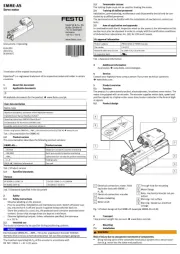
1 Augustus 2025
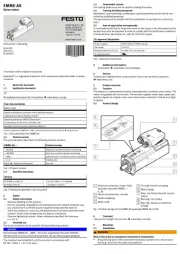
1 Augustus 2025
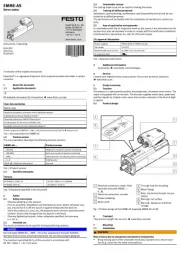
1 Augustus 2025
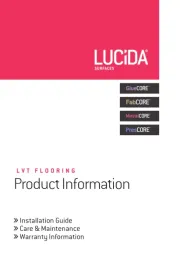
1 Augustus 2025
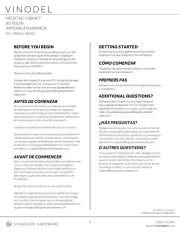
1 Augustus 2025
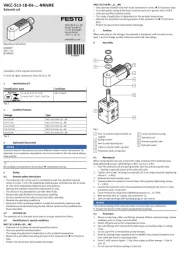
1 Augustus 2025
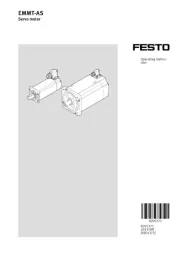
1 Augustus 2025
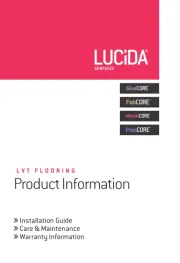
1 Augustus 2025
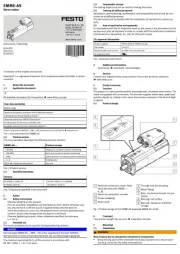
1 Augustus 2025

1 Augustus 2025